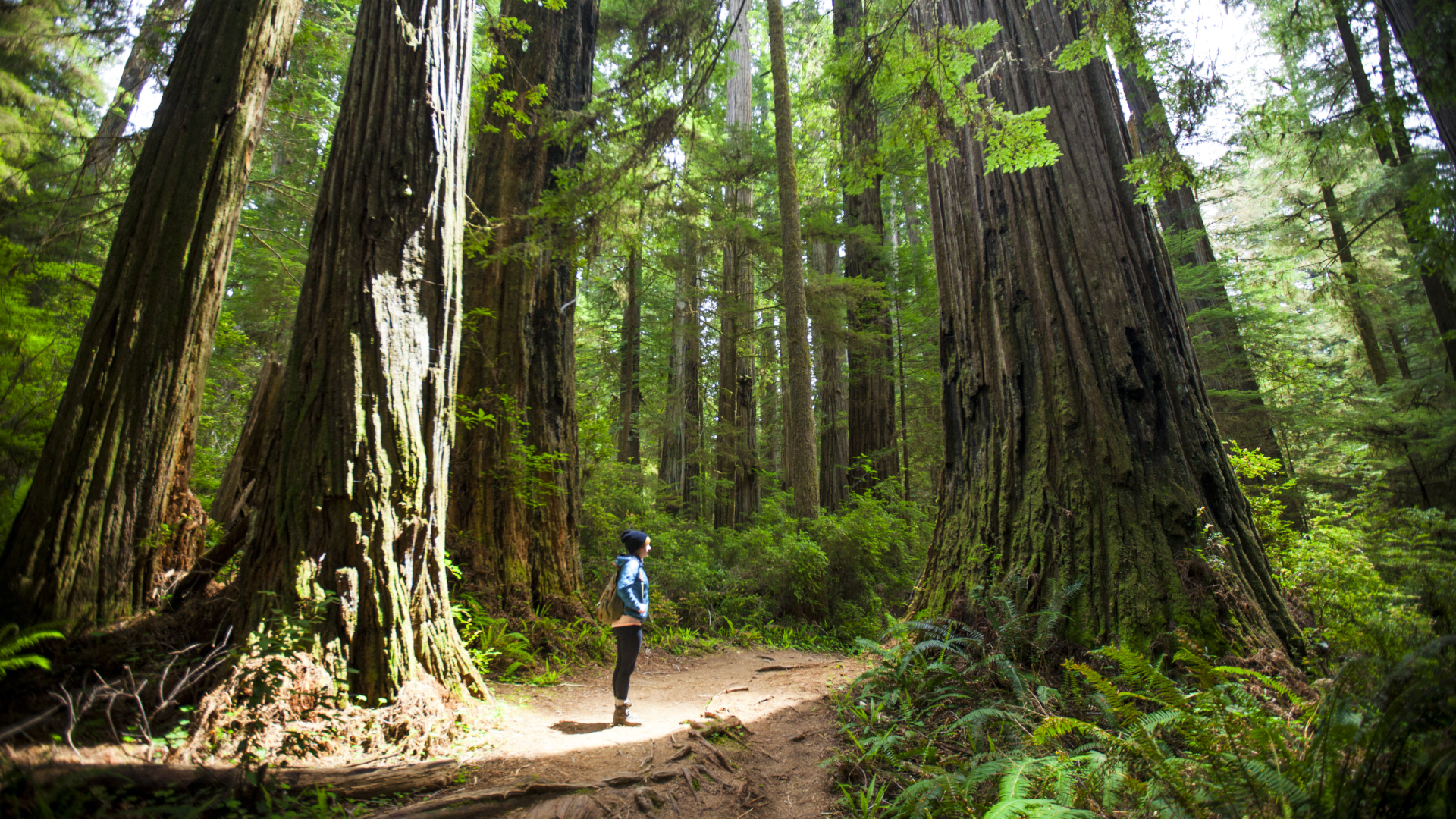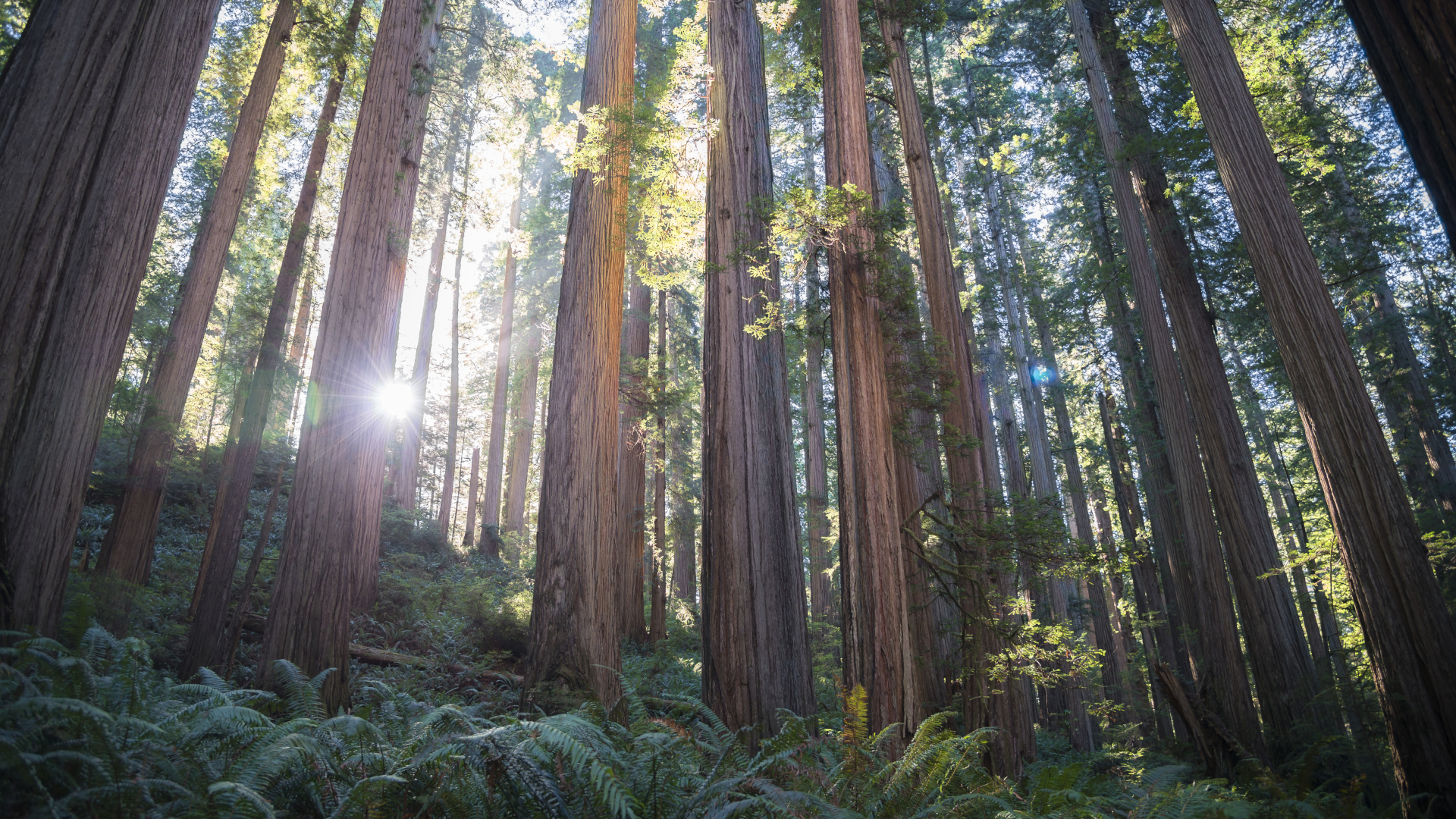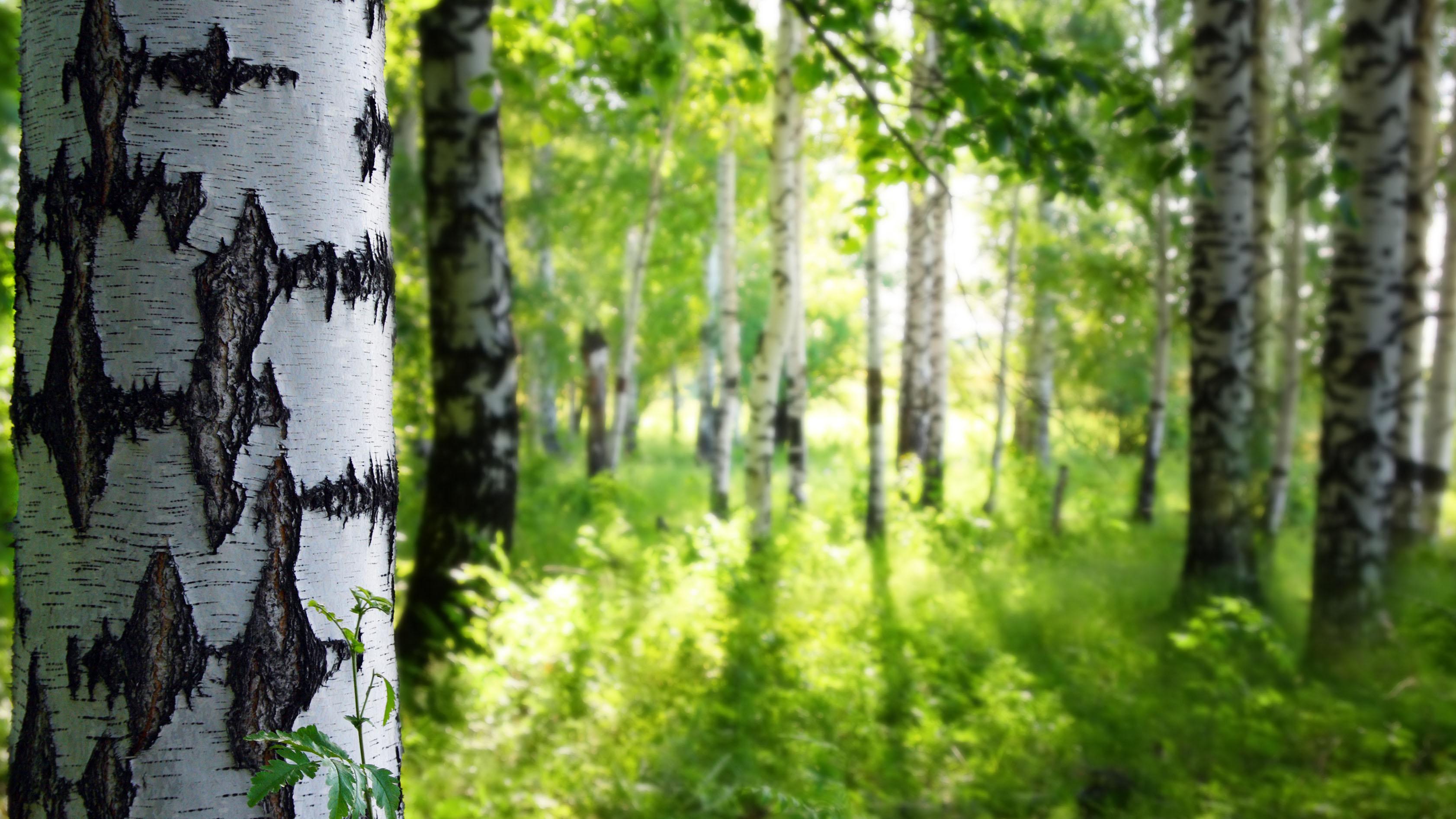Phytoncides: the hidden power of plants and how hiking heals
We explore the invisible chemical compounds emitted by plants that are credited with boosting our immunity

“Twenty minutes, three times a week, hanging out with trees is enough to boost your immune system,” our forest bathing guide Allie Fuller tells us as we saunter through the trees.
We’re wearing hiking boots to account for the rough ground underfoot, but in no way would I consider this a hike. Rather, we’re walking as slowly as we possibly can in the early morning light, birds twittering from the trees above us.
As we stroll, Fuller invites us to reach out and touch the plants, give their leaves a squeeze, and smell them with what she describes as a “childlike curiosity.” This, she explains, is what exposes us to the phytoncides that may go a long way towards explaining why spending time in nature is so good for our health.
The word phytoncides is one that’s been coming up a lot for me lately – perhaps because I’ve been fortunate enough to enjoy several forest bathing sessions – and I’m curious to understand more about what they are, and why they’re so good for our health. To learn more, I recently spoke to ecotherapist Stefan Batorijs on the matter, and it turns out he’s written all about phytoncides in his new book Wild Life: Shinrin-Yoku and The Practice of Healing through Nature.
“We evolved in collaboration with the phytoncides from trees. They're an integral part of our immune system,” explains Batorijs.
The idea of evolving with trees might sound a little new age to some, but Batorijs reminds me that we share about 15 percent of our DNA with trees, and what protects them also protects us.

What are phytoncides?
The term phytoncides is an umbrella term for microscopic volatile organic compounds, individually known as terpenes, that are naturally occurring in all plants. Terpenes give plants their aromas and flavors, but they also have important antibacterial and antifungal qualities.
All the latest inspiration, tips and guides to help you plan your next Advnture!
The word “phytoncide” literally translates as "exterminated by the plant" and was coined by Russian biologist Boris Tokin in the 1920s when he was examining how plants defend themselves in a lab setting.
All plants emit these chemicals to protect themselves from attack, be it from a fungus, bacteria or parasite, and they can vary the rate at which they release phytoncides depending on the type and intensity of attack. In his book The Secret Life of Trees, scientist Peter Wohlleben writes that the air at the center of a conifer forest is completely germ-free because phytoncides have such incredible antibacterial properties.
These microscopic compounds are atomized and released by plants in an aerosol form into the air. Being lighter than air molecules, they then drift around the world with the wind and play an important in the health of the biosphere.

What are examples of phytoncides?
There are several thousand terpenes that we refer to collectively as phytoncides since each tree will produce what Batorijs describes as its own “cocktail of chemicals” specifically designed to protect it against the particular organism that might threaten it.
We're just at the tip of the iceberg when it comes to identifying and classifying phytoncides, however, there are three main terpenes that have been researched most extensively. Pinene is responsible for the pine scent we love to inhale when we're walking through the forest, limonene gives us the refreshing lemony scent in a summery spritzer, and myrcene is an analgesic that is emitted by the cannabis plant.

How do phytoncides affect humans?
Though Tokin identified phytoncides back in 1928, it wasn’t until more than 50 years later, in 1982, that people began to suspect they could also impact human health. At that time, Batorijs tells me, the Japanese Ministry of Forestry was tasked with taking people on forest walks to reduce their stress levels. The professors charged with this initiative were aware of Tokin’s work, but they didn’t yet understand the potential health benefits of phytoncides for humans until they went into the forest.
“When these people were being taken out on walks, they were anecdotally reporting feeling a lot better and a lot less stressed,” says Batorijs.
However, it wouldn’t be for another 20 years or so that scientists studying phytoncides developed sufficiently accurate field-measuring instruments to pick up these invisible compounds.
“That's when they began to make the link between the release of the phytoncides and measurements in the blood that they were actually affecting our physiology, and that's when it starts to get exciting.”

Phytoncides principally help plants fight disease, but research suggests they also might help humans do the same thing when we breathe them in. That might explain why essential oils, which contain a concentrated form of the aerosol phytoncides that are released into the air, have been credited with various healing properties over the centuries.
In lab experiments such as 2006 research performed in Tokyo, it’s been found that phytoncides increase the activity and availability of certain “natural killer cells,” otherwise known as a type of white blood cells whose job it is to search the body for damaged, diseased, or dead cells and retire them.
Outside of the lab, a small 2008 study took 12 healthy male subjects on a three-day forest bathing trip and observed a significant increase in natural killer cells as well as a reduction in the stress hormone adrenaline in urine samples for seven days following the trip.
In that case, the scientists speculated that the increased phytoncides found in the forest air, as opposed to city air, could be responsible for the boost to the subjects’ immune systems. This research and more is discussed in an in-depth 2010 paper published in the journal Environmental Health and Preventative Medicine.
“What trees and plants produce to protect themselves from attack also protects us from attack, and that to me is a complete miracle,” summarizes Batorijs.
It’s important to note that the research on phytoncides is limited, and more investigation is needed to fully understand their role, if any, in human health. That said, there are doctors in Scotland and the US who are now actively prescribing time in nature to their patients.

How do I get more benefits from phytoncides?
To increase your exposure to phytoncides, it seems that while having more house plants may be beneficial – Batorijs mentions their role in cleaning and balancing the air in your home or office – what you really need to do is spend more time outdoors in green spaces.
Head to the forest or even your backyard or a local park and do what Batorijs describes as a “scratch and sniff” exercise.
"Give a leaf a rub and then just breathe it in and you’re taking in phytoncides into your system.”
Remember that though we’re drawn to the ones that smell nice, like pine trees, all plants emit phytoncides even if you can’t smell them. Regular time spent walking amongst plants, touching and smelling them, whether you’re hiking, forest bathing or meditating outdoors, may help boost your immune system, allowing you to enjoy better health, physically and mentally.
“When you go through the list of all the things that forest bathing helps to heal in a human being, if we reverse that, I think it's fair to say that we’re only getting those illnesses because we're no longer spending time in the forest and because there's less forest to spend time in,” concludes Batorijs, with a vital final reminder that caring for our planet is, therefore, an act of self-care.
Even if it’s not the phytoncides that are helping your health, the time in green spaces with the sights and sounds of nature has been shown to drastically reduce stress levels, and surely that’s reason enough to give it a go.
Julia Clarke is a staff writer for Advnture.com and the author of the book Restorative Yoga for Beginners. She loves to explore mountains on foot, bike, skis and belay and then recover on the the yoga mat. Julia graduated with a degree in journalism in 2004 and spent eight years working as a radio presenter in Kansas City, Vermont, Boston and New York City before discovering the joys of the Rocky Mountains. She then detoured west to Colorado and enjoyed 11 years teaching yoga in Vail before returning to her hometown of Glasgow, Scotland in 2020 to focus on family and writing.

